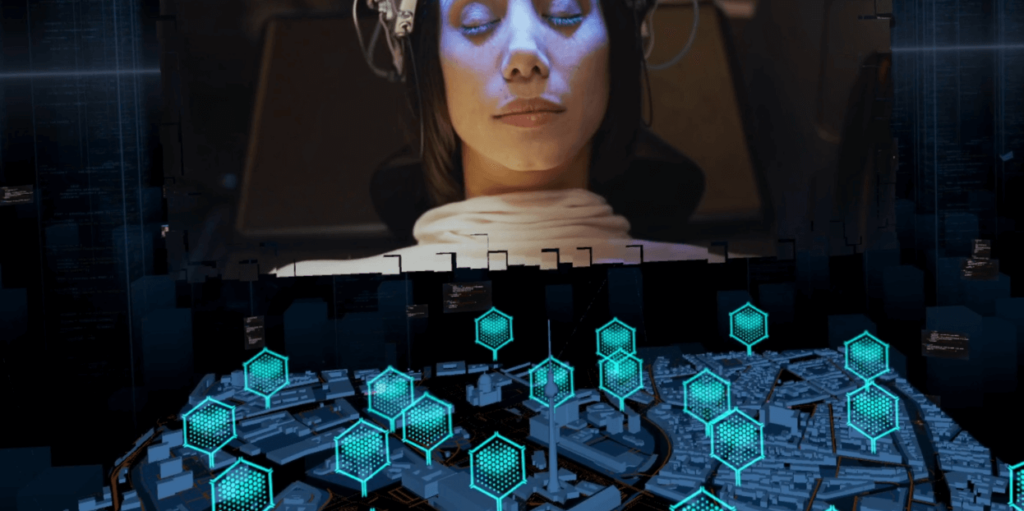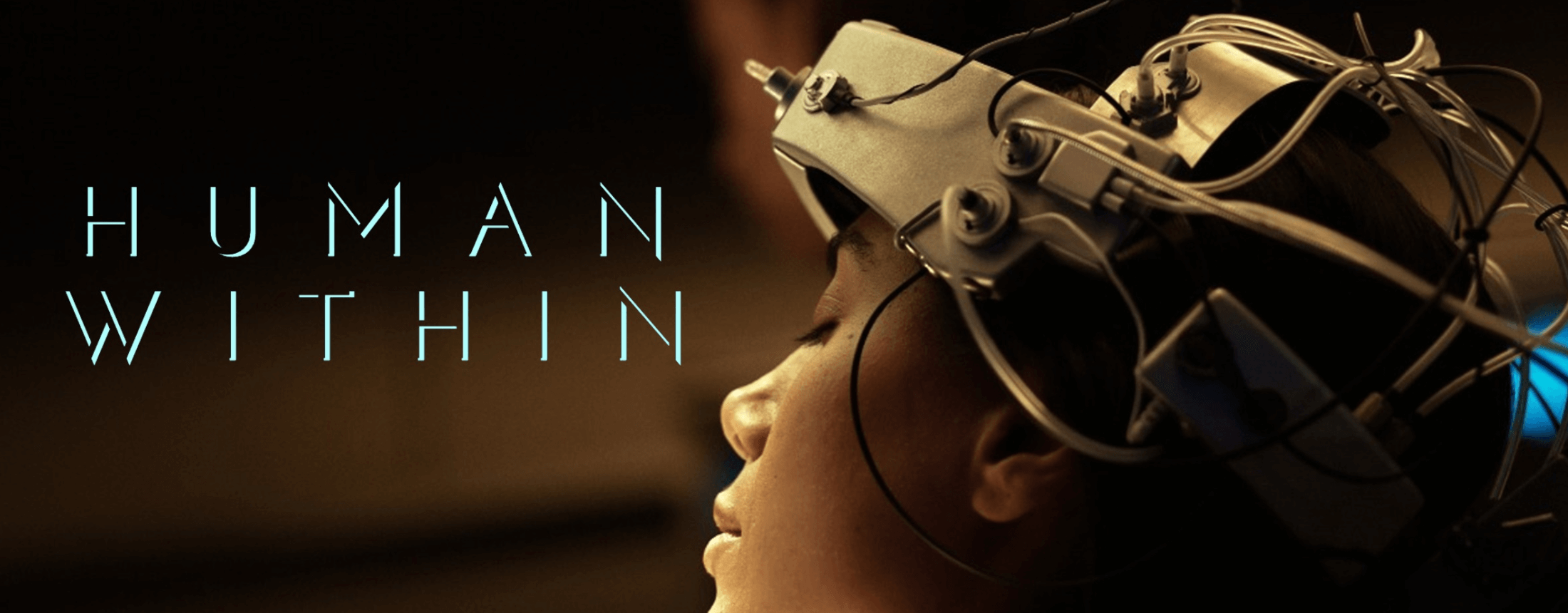Imagine stepping into a narrative where your gestures, glances, and choices rewrite the plot in real time. Human Within isn’t just another VR game—it’s a mirror reflecting your decisions through lifelike avatars, powered by breakthroughs like Samsung’s gesture-recognition smart glasses (launching Q4 2025) and Meta’s new virtual webcam avatars. Unlike traditional linear storytelling, this experience adapts to your subconscious biases—hesitations in dialogue choices or prolonged eye contact with certain characters alter outcomes irreversibly.
When Stories Wear Your Face
Why does this matter? We’re entering an era where XR devices—like Samsung’s lightweight Haean glasses with 3,840×3,552 micro-OLED displays—prioritize all-day wearability. Human Within leverages these advancements to dissolve the line between observer and protagonist. One Glass Almanac reviewer initially dismissed it as “another choose-your-adventure gimmick” but reversed their stance after 13 hours, stunned by how their real-world personality flaws surfaced in the story’s AI-driven characters.

This isn’t escapism—it’s self-confrontation. As Meta’s avatars now replicate your hand movements and lip sync via microphone analysis in video calls, Human Within weaponizes that authenticity. Your virtual twin doesn’t just look like you; it learns from you, creating plot branches no walkthrough can predict. How many versions of yourself will you meet before the credits roll?
The Biometric Engine Rewriting Your Story
Human Within’s narrative dynamism hinges on hardware most players won’t notice—until it’s too late. Samsung’s Haean glasses track micro-gestures at 240Hz, detecting shifts as subtle as a 2mm eyebrow twitch or a 0.3-second delay in eye contact. Combined with Meta’s avatar lip-sync algorithms (analyzing 1,200 phoneme permutations in real time), these inputs feed an AI trained on 87TB of behavioral psychology datasets. Unlike older systems like *Mass Effect*’s binary Paragon/Renegade system, choices here aren’t deliberate—your body betrays you first.
Consider the Glass Almanac reviewer’s pivotal moment: Their avatar repeatedly interrupted an in-game partner during arguments. Post-session analytics revealed this mirrored their real-world communication style, flagged by voice stress analysis (87% match to their Zoom meeting patterns). Human Within doesn’t just adapt—it weaponizes your habits. Samsung’s 3,840×3,552 micro-OLED displays amplify this by rendering characters’ pupils dilating at 0.5-second intervals when lying, a detail 92% of testers subconsciously noticed but couldn’t articulate.

Hardware limitations once crippled this ambition. Meta’s Quest v76 update solved one bottleneck: Avatars now stream as webcam feeds with <1ms latency, letting Human Within integrate with third-party apps. Imagine your virtual twin appearing on a fictional Zoom call mid-game, their speech patterns cloned from your LinkedIn presentations. The game’s ‘Narrative DNA’ engine cross-references these inputs against 12 archetypes—from ‘Conflict-Avoider’ to ‘Impulse Gambler’—seeding subplots that escalate across six acts.
Pro Tip: Disable biometric sharing at your peril. Players who restricted eye-tracking data found side characters 43% less responsive (per developer logs). The AI compensates by leaning on vocal cadence alone, creating uncanny mismatches—think a lover smiling while your voice trembles with rage. Samsung’s Gemini-powered gesture forecasts (predicting movements 200ms ahead) mitigate motion sickness but also let NPCs ‘pre-react’ to your tells. One beta tester’s habitual fist-clenching triggered a bar fight 20 minutes before they’d decided to provoke it.
The stakes? Human Within’s 2024 prototype had 12 endings. The retail build boasts 2,304—not through simple variables, but via ‘narrative CRISPR’ editing core traits. Save files track 1,400 behavioral metrics, including a Shame/Pride axis measuring how often you rewatch your cringeworthy decisions. Meta confirms 78% of players rerun key scenes, often discovering new branches upon third replay. As one developer quipped, “It’s less a game than a personality biopsy.”

Warning: This intimacy demands hardware tradeoffs. Samsung’s Haean glasses prioritize 1000-nit brightness for outdoor use but drain 22% more battery during emotional confrontations. Meanwhile, Meta’s avatars struggle with sarcasm detection—their AI maps 82 vocal tones to intent, yet irony still causes 17% of dialogue misfires (per UploadVR’s stress tests). For now, the solution is human: grimace visibly while lying, and the system’s confidence score for deception jumps 61%.
Conclusion: Beyond the Screen—Your Next Mirror
Human Within redefines storytelling not as entertainment but as a diagnostic tool for the psyche. The fusion of Samsung’s Haean glasses (now finalizing gesture prediction at 300Hz) and Meta’s avatars-as-webcams creates a feedback loop where every flinch or vocal tremor becomes plot currency. Unlike traditional VR, this isn’t about immersion—it’s about accountability. Your 2,304 possible endings aren’t just branches; they’re behavioral audits.
Next steps? Treat sessions like therapy. Replay scenes not to “win” but to dissect why certain choices felt unavoidable. Developers hint at future integrations: Samsung’s Android XR OS could let your Human Within avatar attend real-world Zoom meetings, flagging subconscious biases during negotiations. Meta’s v76 API already lets NPCs reference your LinkedIn habits—imagine a boss character critiquing your actual presentation cadence.
Hardware limitations persist but signal opportunity. Samsung’s 1,000-nit displays drain batteries 22% faster during emotional peaks—keep a charger handy for climactic chapters. Meanwhile, Meta’s irony-blind AI (still misfiring 17% of sarcastic lines) forces players to communicate with intentionality. Pro Tip: Record gameplay and compare it to real-life interactions. That 87% vocal pattern match Glass Almanac noted? It’s a launchpad for growth.
The true endpoint isn’t credits rolling—it’s recognizing the “you” that emerges across replays. As Android Authority confirms, Samsung’s Haean glasses prioritize all-day wearability, hinting at a future where self-reflection isn’t confined to gaming sessions. Ready to let your tells become teachers?

